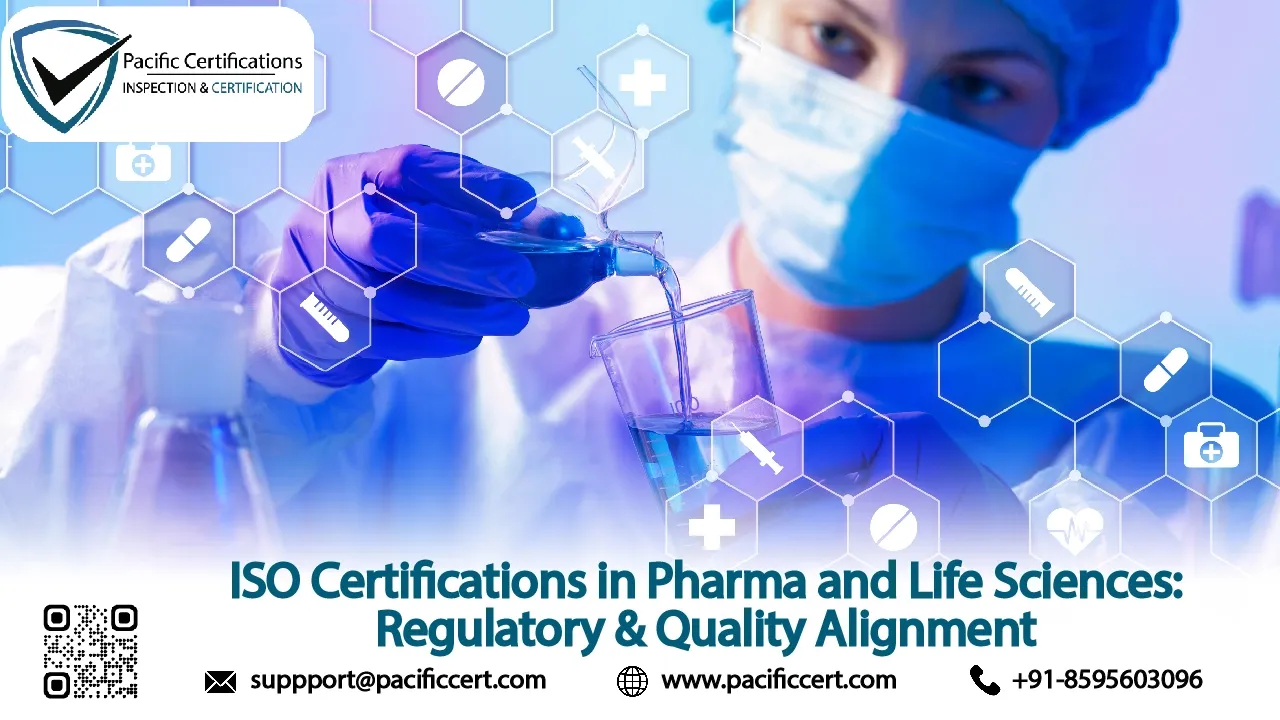ISO Certifications in Pharma & Life Sciences: Regulatory & Quality Alignment
Pharmaceutical and life sciences organizations operate in one of the most regulated industries worldwide. From drug development and clinical trials to manufacturing, distribution and post-market activities, every stage demands patient safety, data integrity and consistent quality. ISO certifications provide a global framework that helps organizations structure their operations, meet regulatory expectations and build trust with patients, regulators and partners.
Why ISO Certifications Matter in Pharma & Life Sciences?
In this sector, proof of quality and safety cannot be assumed — it must be documented and verifiable. ISO certifications demonstrate that an organization has a controlled system in place, that employees follow defined processes, and that management actively monitors compliance. This not only strengthens regulatory readiness but also eases global collaboration, supplier qualification and audits.
Key ISO Standards for Pharma & Life Sciences
-
ISO 9001 (Quality Management Systems): Provides a structured QMS across research, manufacturing and quality assurance.
-
ISO 13485 (Medical Devices): Applies to medical devices, diagnostics and related products.
-
ISO 14971 (Risk Management): Focuses on identifying and mitigating device and product risks.
-
ISO 17025 (Testing & Calibration Laboratories): Ensures laboratory competence and reliable test data.
-
ISO/IEC 27001 (Information Security): Protects sensitive research, clinical and patient data.
-
ISO 27701 (Privacy Information Management): Extends privacy and data protection controls.
-
ISO 22301 (Business Continuity): Maintains continuity in supply, production and critical operations.
Together, these standards cover quality, safety, information security and resilience — all crucial for this industry.
Requirements for ISO Certification in Pharma & Life Sciences
Organizations seeking ISO certification typically need to:
-
Define the scope — research, manufacturing, labs, distribution, or all.
-
Establish policies on quality, risk, data security and process control.
-
Conduct risk assessments across safety, supply chain and data integrity.
-
Maintain documented SOPs, validation files, calibration and training records.
-
Provide staff training and define role-based competencies.
-
Implement operational controls — such as temperature monitoring, access security and audit trails.
-
Perform internal audits and management reviews to track performance.
Certification Audit
The certification process usually involves:
-
Stage 1 Audit: Review of documentation, scope and readiness.
-
Stage 2 Audit: Evaluation of implementation across facilities, processes and records.
-
Corrective Actions: Addressing nonconformities before certification is granted.
-
Surveillance Audits: Annual checks to ensure ongoing compliance.
-
Recertification: Conducted every three years to renew certification.
Benefits of ISO Certification in Pharma & Life Sciences
-
Greater preparedness for regulatory inspections and external audits
-
Strengthened process discipline and staff accountability
-
Improved data security and privacy safeguards
-
Reduced supplier and operational risks
-
Faster deviation handling and CAPA effectiveness
-
Easier access to new markets and partnerships
Recent years have seen growing interest in combining ISO standards with digital systems and data security frameworks. Many pharmaceutical companies now integrate ISO 27001 and 27701 alongside GMP and ISO 13485 to create a more unified approach that covers both product quality and data protection.
Read more: ISO Certifications in Pharma & Life Sciences: Regulatory & Quality Alignment

Comments
Post a Comment